Streamer Fishing According to Jake
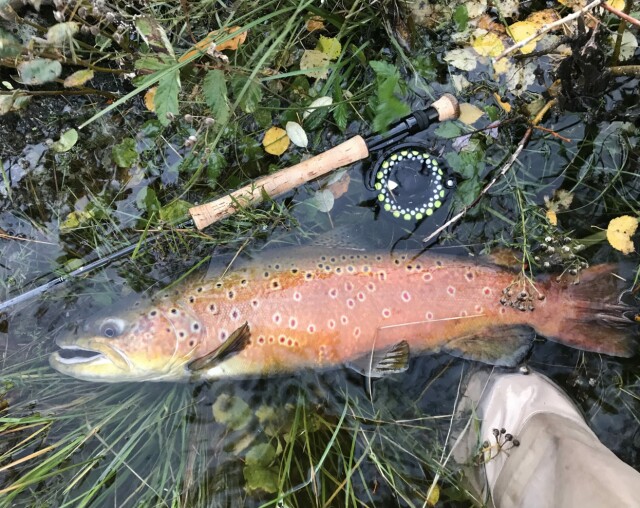
Jake Semons is American and has a slightly different approach to fly fishing than most Norwegians. But his method has given many trout, far more than most of us can boast. Jake is a fishing guide with a great knowledge of fishing. In this article he shares some of his thoughts and secrets.
As an American Jake Semons has a slightly different approach to fly fishing than most Norwegians. But his method has given many trout, far more than most of us can boast. Jake is a fishing guide with a great knowledge of fishing. In this article he shares some of his thoughts and secrets.
Written by Jake Semons.
When you mention fly fishing to a Scandinavian, most of them have visions of sitting down sipping coffee cooked on the river banks while scouting for fat trout sipping on the surface.
There is likely nothing more glamourized by fly anglers, but what exactly do you do when the trout aren’t rising? Does that mean the trout aren’t eating? And should we really just sit around waiting for the majority of the year when the hatch isn’t on?
Nope!
We all love throwing dries, and when the hatch is on there is nothing better. But when the fish don’t rise you need to switch up those tactics. Some of you may disagree with me, but streamer fishing is the most varied of method of fly fishing, and undoubtedly the most rewarding in terms finding big fish in your net.
That’s my opinion anyway, and you’ll find more opinions if you decide to keep reading.
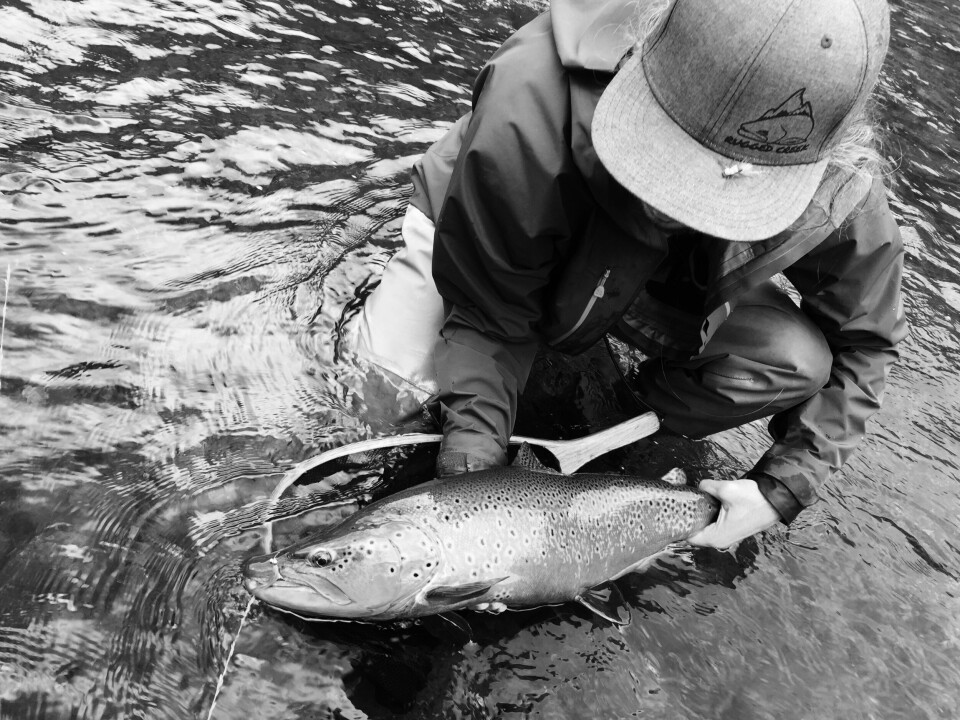
Know Your Water
The trick to successful streamer fishing is planning. We all know that a sea run brown will eat a shrimp or a bristleworm, you just need to find the fish and figure out what their feeding on. Freshwater trout are just the same. Knowing when and where is key, because fish may migrate to feed on something specific at certain times of the year, and of course they migrate to spawn.
Once you figure out their feeding and migratory behavior they are typically not too hard to find. If a river system has a healthy population of food, you will logically find a healthy population of bigger fish. You simply need to learn about the places you fish.
Once you know enough about your river’s ecology you’ll need to learn when and how to target big fish. Some may claim they only catch big fish, but the truth is it’s a numbers game.
Rivers with a consistent water level such as Rena will always be home to large resident fish, whereas regulated rivers or flood rivers running into lakes will likely have migratory trout in and out of the river based on water levels.
Knowing when to fish these rivers is crucial to finding big fish, especially when targeting migratory trout. If the fish are not there you are wasting your time, and you might as well go do something else productive like tie up some streamers.
The spring runoff, late summer and fall are the prime times for migratory trout, just make sure to keep an eye on the weather and the water levels. Just like with salmon fishing the weather and the right water flows are critical to the fish being there in the first place.
The Gear
This is really pretty simple. You should choose your entire setup based on the fly you’re fishing. Once you’ve chosen the fly you choose the line that will effectively deliver the fly and keep it in the zone. Once you’ve chosen the line you need a rod that will throw that line.
The reel holds everything, and having a solid drag system is important if you are going to be targeting big trout. I’ve developed and produced rods and reels geared towards streamer fishing for the past several years with Rugged Creek, including the GRProto line of fly reels. But really any reel will work as long as it isn’t Chinese junk that seizes up on you when you finally hook into your dream fish. Spend a bit of money on a good fly reel and I promise you won’t regret having something that lasts.
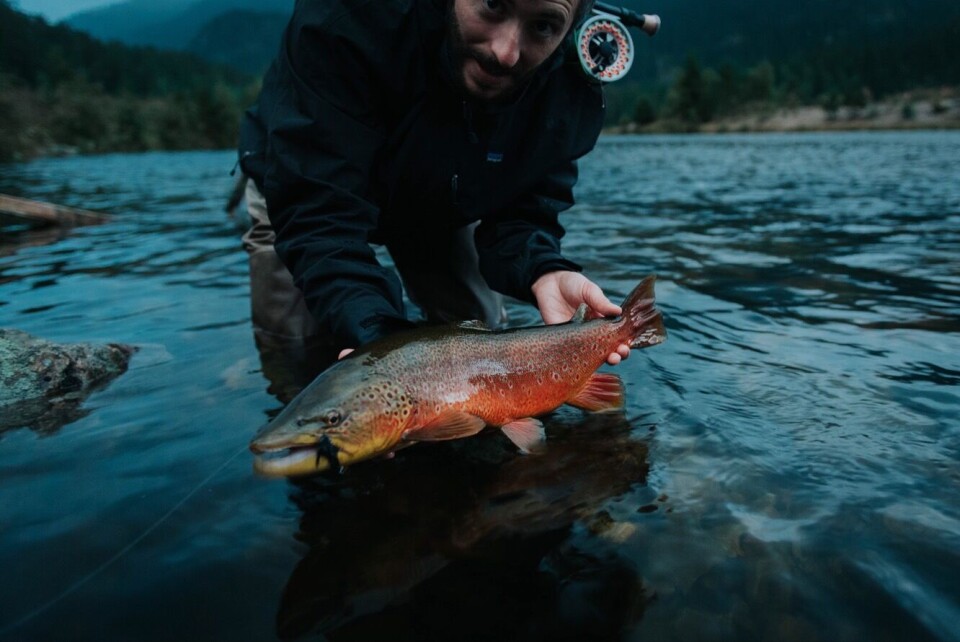
Choosing the right fly
Streamer fishing is imitation fishing. Before you tie one on you should ask yourself the following: What species of fish live there?
Whitefish, grayling, smelt, sculpin, juvenile trout, lampreys, crawdads, frogs, mice, and other baitfish are the staple diet of larger trout throughout Scandinavia, but what species can be found in the specific river system you are fishing? And knowing what bait species are found how should you effectively Imitate them and properly fish them?
Do they live on the bottom? Along the banks? In the shallows? Fast water? Slow water? Still water? Where are they at what time of year? What kind of action do you want in the fly? What size of fly is going to be most effective?
Properly matching the color, size, and swim of your chosen imitation is key. If you match their food you will find fish.
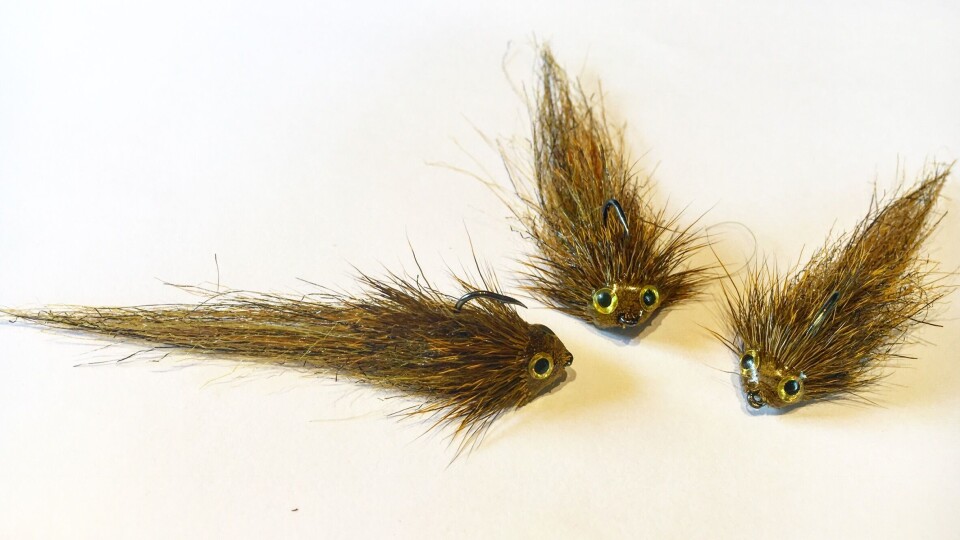
Color choice should be based on water color, lighting, and which species you are trying to imitate. In clean clear water choosing a realistic natural color is typically most effective, while in darker tea stained water something bright like a yellow or white fly can be very effective.
The fun part about fishing a bright colored fly is that they are easy to see, and there is nothing quite as exhilarating as watching a big shadow swirl on your fly with a big white mouth open opening up to inhale it! Being able to see your fly also allows you to fish it in a different way. For example having more control over the fly around structure.
In low light conditions a slightly bigger darker fly is the way to go. If I had to choose only three colors to fish for the rest of my life they would probably by black, olive, and white.
When in doubt fish black!

Most people tie streamers with too much flash. You don’t need it. And if you do use flash keep it light. The only exception to this is when the water has low visibility, then flash can be a good thing.
Flies with the least amount of materials are quicker to tie, look more natural, and typically outfish fancier flies. If you tie your own flies try to build as much bulk with as little material as possible. This will make a big difference in how the flies cast, present, and swim. Just because it looks good on the vice doesn’t mean it will look good in the water. Its easy to get caught up in tying your flies too complicated, and using too much material.
With fly tying less is more.
Fish are sensitive and rely on “feel” much more than most anglers think. Especially in low light conditions and dirty water. Tie on a simple muddler, or a pattern from Andreas Andersson or Kelly Galloup. Deer hair allows for a large profile to push water, and if trimmed properly will give the fly a specific replicable action.
My go to streamer is one of my own patterns I call “Slayfest” which uses only two materials, craft fur and deer hair. It casts like a dry fly, pushes water, has incredible action, and they work consistently everywhere on any predatory species. Its honestly pretty much the only fly I use, big or small, one hook or two hooks.
And make sure to use proper hooks. The boys over at Ahrex make some of the best hooks out there!
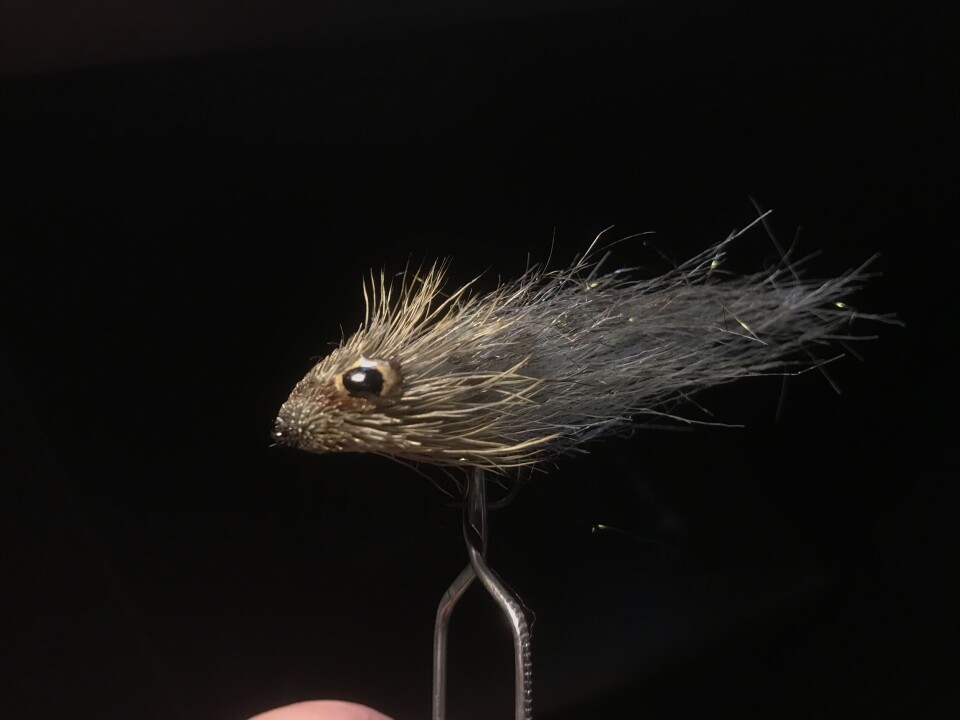
When I first came to Norway I remember showing my friends my fly box full of big ass yankee streamers, and I got laughed at… Typical American they said.
However, big flies can be super effective when fished with a specific technique and in the right type of water. Big streamers should be fished as a trigger, or to piss off the fish.
Imagine you are a trout hugging the river bank, or holding in your own little pool, keeping an eye out for your next meal. If you see something big flashy and unnatural coming at you from a mile away, or you see it swing closer and closer to your face in the same direction several times, you are probably just going to move out of the way. But, if you’re sitting there minding your own business and all of a sudden something big moves fast right at your face you’re probably going to hammer it!
This is a very effective technique when drifting and pounding the banks, or when fishing faster pocket water. You want to put the fly right up under the bank and strip fast and hard and trigger the fish. The concept is “flight or fight” meaning that fish have very little time to react and either get out of there or attack.
You typically don’t need to make more than one cast in the same place with a big fly, if they don’t take it right away go find some new water.
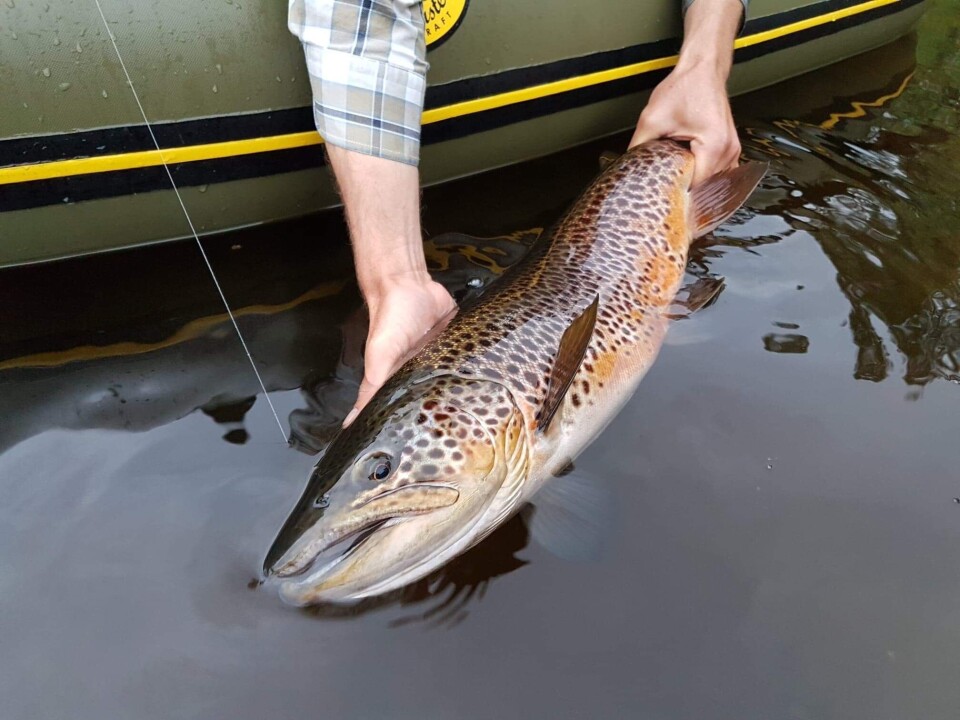
Smaller more natural baitfish patterns are effective when searching for fish. Not only are they easier to cast, but they are easier to present in a natural way. When wade fishing and swinging flies this is the way to go. It also is typically much more effective in calmer or cleaner water. Match the local baitfish and cover some water.
Fish typically hold at the head or the tail of the pools, and will often hold right around structure. Make sure to fish carefully around logs and structure, because big fish are predatory, they will often find places to hide while they wait to pluck off their next meal. At the end of the day what is most important is that you have faith in whatever fly you’re fishing and fish it in confidence.
Choosing the right line
So now you’ve decided where you are fishing, and you know what big trout eat in your river system. Now we need to figure out how to effectively fish this specific river. What are the water levels? What is the river like? Is it deeper and slower flowing? Or is it fast with small pocket water throughout?
Knowing this is crucial to getting your streamer in front of that monster trout, keeping it at the right depth for the right amount of time. Generally speaking big trout hold on the bottom. Pretty much always. Yes, I’m gonna go ahead and say always. Once you think you are almost about to snag the bottom, just let it sink a bit more.
Then boom! Sometime it is the bottom, but often it’s a fish!
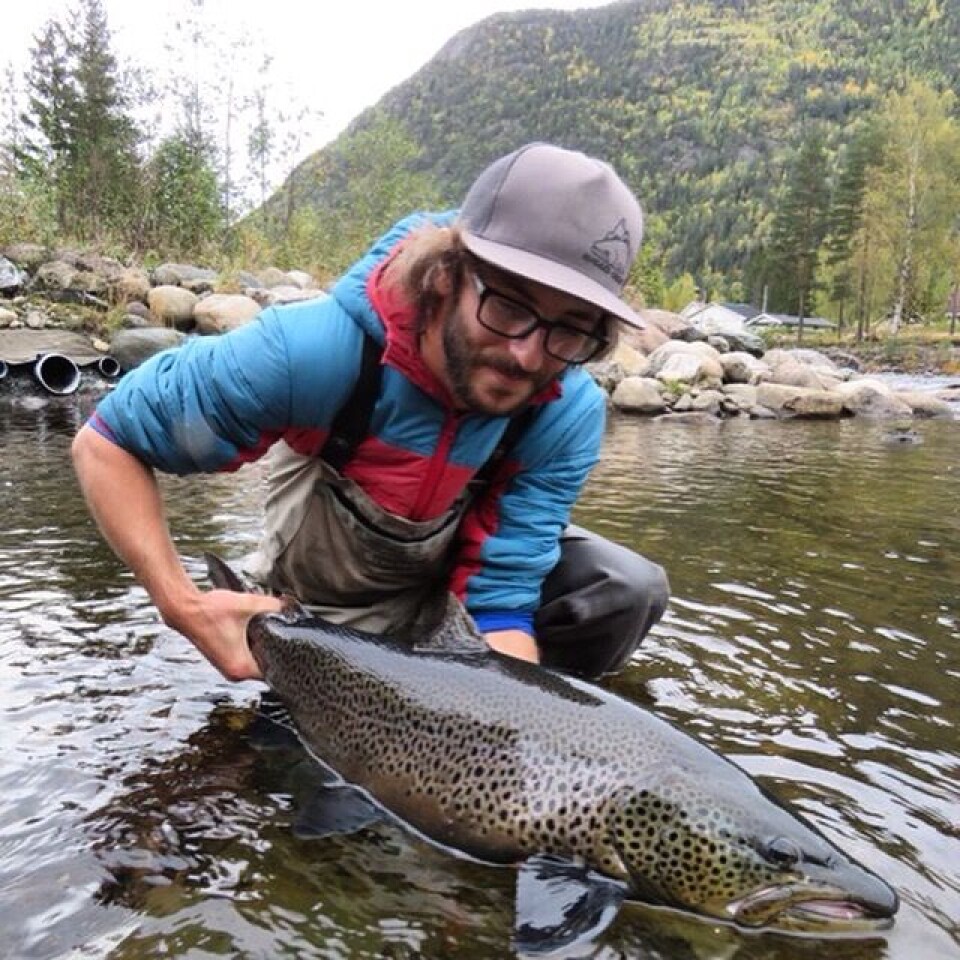
Lines really have two variables. Taper, and sink rate which should be determined by the depth you are fishing and the and the size of fly.
Deeper water means a faster sink rate, while size of the fly and casting techniques required for where you’re fishing determine the length and taper of the head portion of the line. Bigger bulkier flies require a shorter more aggressive head to be turned over and fished properly. Whereas you can achieve a much better presentation with a longer tapered fly line when fishing smaller flies.
However, river systems vary, and the right line in one river can be either too much or not enough in another river. Sink lines are hugely important to success in streamer fishing, because if you don’t get your fly in front of the fish they aren’t going to eat, and there is always that one fly line you don’t have yet which would be perfect for a specific river and streamer fishing technique.
Just as a fair warning, streamer fishing is highly addictive and you are most likely going to become a gear junkie. One line leads to another and… well you know the story.
I personally prefer fishing very heavier sink lines with unweighted flies, because it is much easier to cast them. However, in shallower rivers with pocket water a smaller weighted fly fished on a float line and a long leader can be deadly effective and super fun! Fishing with this technique allows for more line control and the ability to mend your line and control your depth. This technique is in many ways similar to Czech nymphing.
When back cast room is limited and I’m searching for fish I really like a single hand spey setup or a smaller two handed rod (switch rod).
Nothing beats the feeling when that line goes tight… The tug is the drug!
Choosing the right rod
Once you’ve chosen the line you’re going to fish you need to decide how to throw it. But when streamer fishing I prefer a medium fast action rod with more of a mid flex and a stiffer tip
The stiffer tip allows for good accuracy and is very good for jerk stripping (using the rod tip to create action in the fly), while the medium fast action and stiff butt allow you to lift heavy lines and big flies out of the water and allow for smooth consistent casting. What makes a rod a good rod is is largely personal preference, and no matter what rod you have what really matters is that it pairs up well with the line.

Where to fish
No matter where you fish you’ll find you catch more if you cover more water. Don’t sit in the same place and beat the water to death with cast after cast, especially in lower and cleaner water. Move around and find fish.
Norway offers a massive amount of good trout water. We have a tendency as fly anglers to look past our own backyards and book a flight to Iceland or New Zealand, but travel as we know may be rapidly changing. However, we should consider ourselves extremely lucky because there are monster fish lurking in nearly every river system here in Norway. The trick is simply figuring out when and where to find them, and what they eat. Just remember that if you find the food you will find the fish, and that big fish eat meat.
Whether you want to strip it, swing it, or drift it, you’ll need to do your research, put down the 4 wt, grab the 7 wt., and go find your dream fish.


